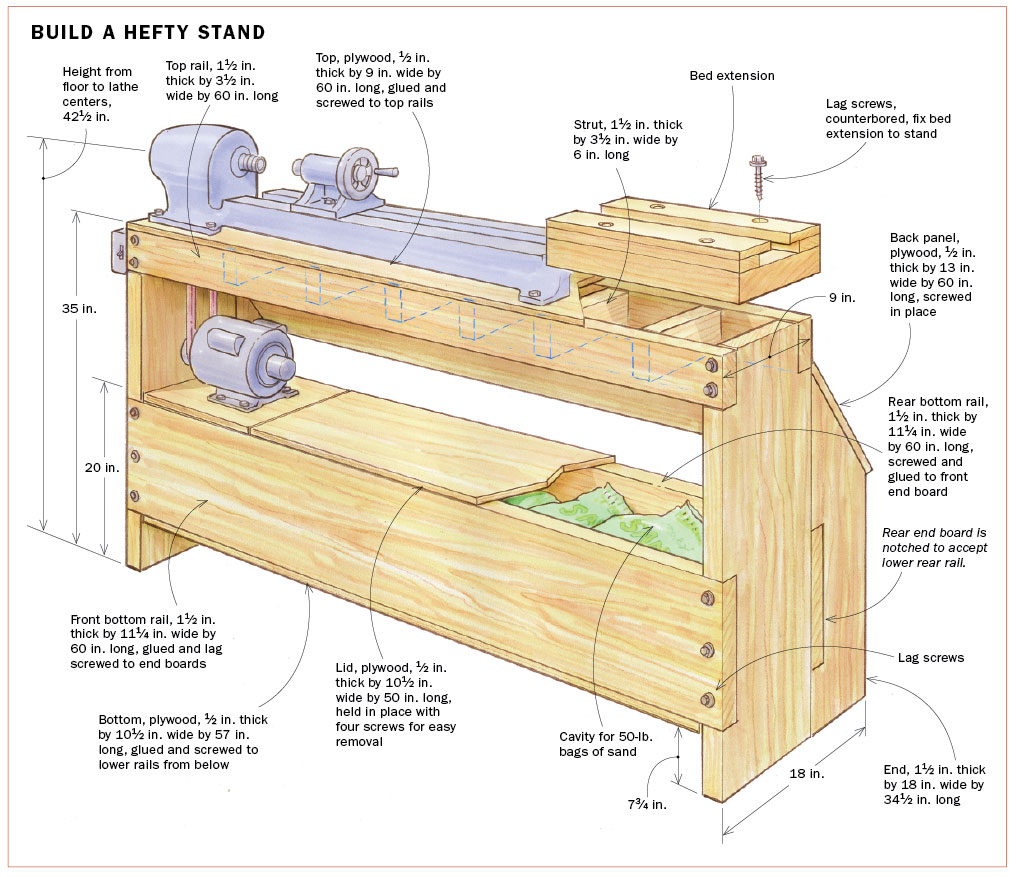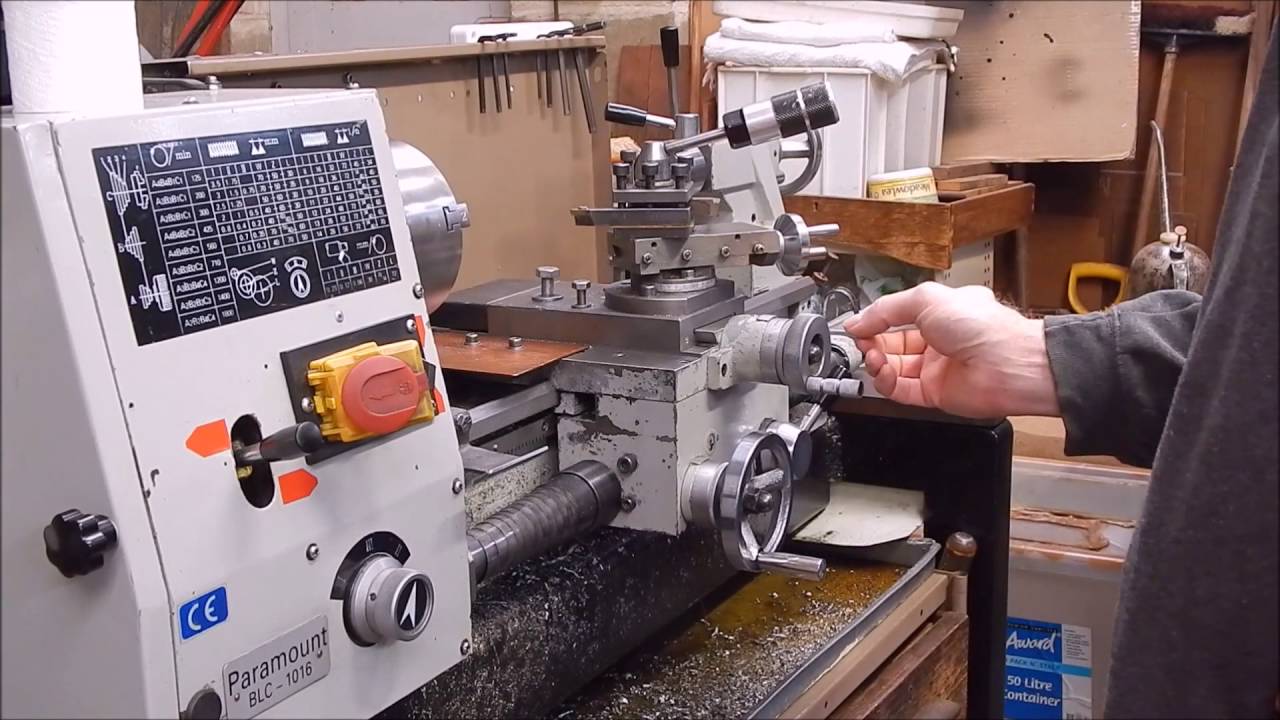Are you curious about what height a lathe should be set at? Well, look no further! If you’re new to woodworking or machining, finding the right height for your lathe can make a world of difference in your comfort and productivity. So, let’s dive in, shall we?
Picture this: you’re standing in front of your lathe, ready to turn some wood or metal. But wait, something feels off. Your back is hunched, your arms are strained, and you’re just not in the optimal position. What’s the solution? Finding the right height for your lathe.
The height of your lathe should be tailored to you, ensuring that you can comfortably operate it for extended periods without any discomfort or strain. So, in this article, we’ll explore the factors to consider and provide some handy tips to help you find the perfect height for your lathe. Let’s get started!

What Height Should a Lathe Be?
Choosing the right height for a lathe is essential for optimal comfort and precision in woodworking tasks. The height at which the lathe is set can greatly impact the user’s posture and overall experience. In this article, we will explore the factors to consider when determining the ideal lathe height and provide practical tips for finding the perfect setup.
The Importance of Lathe Height
When operating a lathe, having the correct height allows for better control, reduces strain on the body, and improves overall accuracy. Working at an improper height can lead to back, neck, and shoulder pain, as well as decreased efficiency in completing woodworking projects. The goal is to achieve a natural and relaxed position that promotes good form and minimizes the risk of injury.
Ergonomics and Personal Preference
Ergonomics plays a vital role in determining the height at which a lathe should be placed. Personal factors such as the height of the woodworker, their arm length, and their preferred working posture should all be considered. Ideally, the lathe should be positioned so that the operator can comfortably stand or sit upright, with their arms comfortably extended to operate the lathe controls and guide the wood. It’s important to allow for adjustment and flexibility to accommodate different projects and individual body types.
Experimenting with different configurations and repositioning the lathe to find the most comfortable working height for the individual is highly recommended. Small adjustments can make a significant difference in terms of comfort and efficiency. Additionally, investing in adjustable lathe stands or platforms can provide additional flexibility in achieving the desired working height.
Working While Seated
Woodworkers who prefer to work while seated should take additional factors into account when determining the ideal lathe height. A proper seating position allows for increased stability and control over the woodturning process. The height of the seat should be adjusted so that the elbows are at a comfortable and slightly above 90-degree angle when resting on the lathe’s tool rest.
An adjustable stool or chair with a supportive backrest can enhance comfort and reduce strain. When seated, the woodworker should be able to maintain good posture, with their back straight and feet flat on the floor. Working while seated also allows for increased control when shaping delicate or intricate details.
Standing and Safety Considerations
For tasks that require more physical exertion or when working with larger pieces of wood, standing may be the preferred position. When standing, the height of the lathe should be adjusted so that the woodworker can comfortably position themselves in relation to the workpiece. It’s important to ensure that the lathe is stable and securely anchored to prevent any accidental movement or vibrations that can compromise safety.
When standing, the woodworker should maintain a balanced stance with their legs shoulder-width apart. This provides a stable base and allows for better control over the lathe tools and the workpiece. If there is a need to lean into the turning area, caution should be exercised to avoid contact with rotating parts. Safety goggles and appropriate protective equipment should always be worn when operating a lathe.
Key Takeaways: What Height Should a Lathe Be?
- The height of a lathe should be determined by the operator’s comfort and safety.
- Generally, the lathe’s centerline should be aligned with the operator’s elbow height.
- A comfortable working height reduces strain on the operator’s back and improves overall efficiency.
- Adjustable stands or workbenches can be used to customize the lathe’s height to fit individual needs.
- Regularly assessing and adjusting the lathe’s height ensures optimal working conditions.
Frequently Asked Questions
Are you wondering about the ideal height for a lathe? Find answers to your questions below!
1. What should be the height of a lathe?
The height of a lathe should be determined by the user’s comfort and ergonomics. Ideally, the lathe’s center height should be set at wrist level, allowing the operator to work without straining their back or arms. Working at a comfortable height promotes better posture, reduces fatigue, and enhances overall productivity. Ultimately, the lathe’s height should be adjusted to suit the operator’s individual preferences.
It’s important to note that the recommended height may differ depending on the type of turning being performed. For example, a woodturner may prefer the lathe to be slightly higher for enhanced control, while a metal turner may opt for a lower height to exert more force. Experimentation and personal preference play a key role in determining the ideal height for each unique situation.
2. How do I determine the right lathe height for myself?
To find the perfect lathe height for yourself, start by standing in a comfortable position with your arms relaxed by your sides. Measure the distance from the floor to your wrist, and use this measurement as a starting point. Adjust the lathe’s height accordingly, ensuring that the center of the lathe aligns with your wrist height.
Remember that personal comfort is crucial, so feel free to make small adjustments until you find the most comfortable position for you. If you share the lathe with others, it’s essential to find a compromise or consider adjusting the height for different users when necessary. The goal is to create a setup that minimizes strain and promotes enjoyable and efficient turning experiences.
3. Can I use a standard workbench for my lathe?
While it is possible to use a standard workbench for a lathe, it may not be the most ideal option. A workbench is typically designed for a variety of tasks and may not provide the best height or stability for effective lathe work. Ideally, it is recommended to use a sturdy lathe stand or a purpose-built lathe bench.
These specialized lathe stands or benches are designed to provide better stability and vibration absorption, ensuring smoother and more accurate turning. Additionally, they often come with features such as adjustable height options, storage compartments, and enhanced durability to cater specifically to the needs of lathe users.
4. Are there any safety considerations when adjusting the lathe height?
When adjusting the lathe height, it’s important to ensure that the lathe remains stable and secure throughout the process. Always follow the manufacturer’s recommendations and guidelines for adjusting the height and make sure that all adjustments are properly tightened and locked in place.
Additionally, be mindful of any potential hazards that may arise due to changes in height. Ensure that the lathe is positioned in a well-lit area and that there is sufficient clearance around the lathe for safe maneuvering. Keep in mind the location of emergency stop buttons and any safety sensors, as adjusting the height may affect their accessibility.
5. What if I don’t have the option to adjust the lathe height?
If you’re unable to adjust the height of your lathe, there are a few alternatives you can consider. One option is to modify your working posture and ensure that you maintain a comfortable and ergonomic position while operating the lathe. This might involve using footrests or adjustable seating to achieve the desired alignment.
Another alternative is to build a sturdy platform beneath the lathe to raise its overall height. This can be done using wood or other suitable materials to create a stable and secure base. However, it’s important to ensure that the platform is securely attached to the lathe and does not compromise its stability or operability.

Wood Lathe Tool Rest How To Use (height, position, maintenance, safety) Woodturning Video
Summary
When deciding the height of a lathe, there are a few important factors to consider. First, you want it to be at a comfortable working height for you. This means your hands should be at a level where you can easily reach and operate the machine without straining. Additionally, you want to ensure that the lathe is sturdy and stable, so it doesn’t wobble or vibrate while you work. Lastly, you should consider your own height and the type of work you will be doing on the lathe to determine the ideal height that works best for you.
